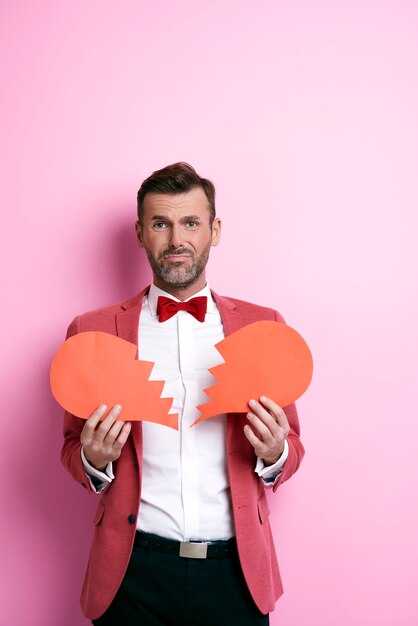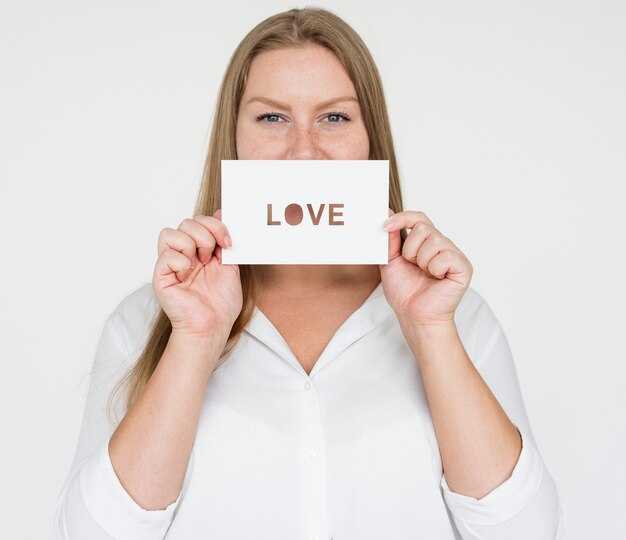Okay, today we have an extraordinarily special guest. For those who haven’t met her yet, Dr. Sue Johnson is a distinguished psychologist, author, speaker and researcher in the realms of individual and couples therapy. She’s the originator of emotionally focused therapy, a model that has achieved remarkable success. She’s received numerous awards and is widely regarded as an authority in her field — and, as if that weren’t enough, she can dance the Argentine tango. Dr. Sue Johnson, I’m incredibly grateful you could join us today. You’re very welcome — what a lovely introduction, thank you. My first question is a simple one. I’ve consumed a lot of your material and read your books — for anyone unfamiliar, she’s written several, including Hold Me Tight and Love Sense, both of which are exceptional. One of my favorite lines from Hold Me Tight is the idea that we must go beneath the surface to pinpoint the core problem: couples are emotionally disconnected and don’t feel safe with each other. What many couples and even therapists miss is that most arguments are actually protests against that emotional disconnection — everything comes down to, “Will you be there when I need you? Can I count on you? Are you responsive?” Could you say a bit about how to help people see that, as you put it, the conflict is the inflammation while the disconnection is the underlying illness? I know it’s a big subject, so feel free to keep it concise. Well, you have to catch it in the moment. In our model, we believe talking alone only gets you so far; you need to bring people into their lived experience. It’s the difference between describing eating an orange and actually tasting one. So you notice what’s happening right then and you map out the pattern — the “dance.” One of the most common patterns, maybe everywhere but certainly in North America, is what we call the protest pattern: one partner feels cut off, often without conscious words for it, a sense of not mattering or being ignored because other things come first. They don’t know how to express their needs; many have learned to think they shouldn’t have them. So they move into a more aggressive stance: “I thought we were going to go out tonight — I guess not, since you’ve got that Zoom thing.” Listen to the tone. Attachment figures influence each other deeply; we accept that a mother shapes a child’s feelings, but we don’t always apply that understanding to romantic partners. When someone speaks to you like that, no matter how secure you are, your immediate experience is to feel, “I’ve failed, I’ve disappointed her, I’m not who she needs right now.” You feel overwhelmed, ashamed, frightened, rejected. From that place you respond, “Why are you being so difficult?” The person protesting hears, “You don’t matter,” and escalates. If that continues, the other partner eventually shuts down and withdraws, which only confirms the protesting partner’s worst fear — that they don’t matter. This dynamic can repeat for years. We sometimes call it the protest poker because it’s all about testing: “Are you there for me or not?” If the answer seems like maybe, probably not, or not now, the protests intensify. The irony is that the protests come from the desire for connection — they aren’t a sign that the person is unimportant; they’re a desperate bid for attention. It’s like my dog when I return after a trip: he presses himself against me and becomes insistent. If I push him away, he gets more frantic. It’s a doggy protest. One of the central aims of EFT, and something I’ve seen countless times, is that when you slow that dance down and help people access softer emotions — sadness, fear, shame — they can express those feelings without passive-aggression or criticism. That not only calms a partner’s nervous system, but it often reveals things the other partner never knew. How often have you witnessed, in therapy, a partner hearing an honest feeling for the first time and saying, “I had no idea”? All the time. I have a wonderful recording of a South African couple who love one another but are falling apart after emigrating. She’s growing angrier and he tries to reason her out of it — “Why are you so angry?” — which doesn’t work, so he withdraws. In a training session, we explored what’s happening for him. He starts with “I don’t know,” and I stay with that answer. He moves from “uncomfortable” to “disconcerting” to “awkward,” and finally to “it’s terrifying.” He realized that when she’s angry he feels overwhelmed and doesn’t know how to respond — and that not knowing is terrifying because he believes he should know what to do. As he walks through those feelings, he can turn to her and say, “When you’re upset, I feel overwhelmed and I don’t know how to make it right. That uncertainty scares me.” Initially he might deny it, but soon he admits, “It’s terrifying not to know how to make things right,” and he can tell her, “I shut down because I’m so scared you’ll be disappointed in me.” Her reaction is often profound: “I never knew that. Thank you for telling me — that changes everything. I thought you were shutting me out because you didn’t care.” He’s shy and awkward, and he laughs, but the exchange is transformative. That session was a single live demonstration during a training; he likely had no words for his inner state when he walked in, but with help he found simple, concrete terms like “overwhelmed.” We avoid grand, abstract labels and instead find the real, specific words. For example, I’m doing more individual therapy lately with a client who had multiple diagnoses and kept using the term “depressed.” I said, “Tell me what you mean by depression. What does it feel like? When did it last happen?” As we explored, she moved toward a truer word: heartbroken — which is different from depression. People need to touch their experience, organize it into manageable language, and feel their longings, needs and fears are legitimate, which the therapist affirms. Then they must be able to reach toward their partner and share those truths in a way that draws the other in. That’s what we call a Hold Me Tight conversation — a bonding conversation. The first few times I formulated it and used it in research, I couldn’t quite name it but I sensed something profound in that exchange. Later I recognized it plainly: it’s a bonding moment where I let you see me, I’m vulnerable, I reach for you in a way that pulls you close and helps you tune into me. When that happens, an extraordinary sense of safety arises and our nervous systems recognize and store it. If someone asked me whether people forget those Hold Me Tight conversations, I’d laugh — of course they don’t. You don’t forget the day the most popular kid in school asked you to the prom in front of everyone; your nervous system recorded it. The same is true of these bonding interactions. That reminds me of another point you make in the book: in insecure relationships we hide our vulnerabilities so our partners never truly know us. That resonates with me personally — both my partner and I started out insecure — and it’s striking how if we don’t create a space where we can be seen, we can’t experience real closeness, yet we keep protecting ourselves. We learn those protections in our families. I love that line from The Eagles I sing on the exercise bike — Take It Easy — “looking for a lover who won’t blow my cover.” It’s so hard to find someone who won’t expose your vulnerabilities, but if you really want an intimate partner you have to let the cover go. It’s interesting: I married my husband — we’ve been married 36 years now. I’d known him eight months and been physically with him maybe six weeks. My friends thought I was crazy and acted like I was stepping off a cliff. Only one friend asked, “What is it about this guy?” He’s not brilliant or famous, but he shows up. He takes risks and allows me to see who he is — and that willingness to be seen is everything.
The feeling was intoxicating—I stood there with my mouth open, astonished that he could still affect me like that. I remember telling him plainly that I wasn’t prepared for a committed relationship, that he was a wonderful man and we got along beautifully, but I simply wasn’t ready. He listened and said, “Okay.” I thought in that moment he’d back away, but then he surprised me: “You don’t have to do anything—I’ll take the risks. I’ll be the one to fall in love.” I asked him to repeat it, and he began to share his feelings for me. My whole nervous system lit up; I loved it. That said, the hard part was that I had to return the same openness. I had to be able to say, “I’m getting angry because I’m terrified. Before you, I left a very damaging relationship, and part of me keeps shouting that this is happening too fast, so I’m frightened.” I needed to be able to speak like that instead of pushing him away, making demands, or testing him—because testing by demanding someone “prove” their love simply doesn’t work. Love can’t be proved; you have to be willing to be open, because the moment your partner hesitates you’ll take that as confirmation of your fear.
Working with the couples in EFT has been remarkable. Watching people over and over fall into the same traps, yet each couple having their own unique way of moving together, shows how those patterns either keep partners isolated or help them reconnect and grow. People help each other develop. That’s why many of us pursue individual therapy: when we feel the clichés—feeling loved and seen—we expand, explore, and change. When we don’t feel seen or loved, personal growth becomes extremely difficult.
If I can ask you something about expertise—although I don’t expect you to know my whole story—mine began in crisis. I cheated early in my marriage, which became a huge turning point: we had to decide whether to divorce or stay together. With young children in the picture, we chose to remain. The silver lining was that my wife, bold and clear, separated from me—not immediately after the affair, but later because I still didn’t understand the harm I’d done. I was trapped in shame and defensive thoughts like “If you’d given me attention, it wouldn’t have happened.” Terrible self-justifications. That rupture forced me to confront things: whether the marriage survived or not, we would figure out why this happened, what we could have done differently, and how to heal ourselves and our relationship. That commitment sent me on a journey of reading many books—yours was one of the earliest I devoured—and everything began to make sense. I soaked it in like air. Once I began to heal and learn, it felt obvious that I should share this knowledge. Sure, admitting you’d had an affair is humiliating and people might wonder why they should take advice from someone who cheated, and that’s understandable—but it didn’t stop me from sharing everything I’d learned from those books. There are many excellent authors—Gottman among them—and plenty of helpful voices. I’m not a therapist or a coach, but I create content about strengthening relationships. I’ve been fortunate to find an audience, which motivates me to get things right.
From that experience we both learned a great deal about the dance of relationships and about healing. I may not be a professional clinician, but I’m passionate about this subject and convinced everyone needs this knowledge. You give a huge gift by admitting mistakes and explaining what you did to make things better. Saying “I messed up” and showing the path to recovery is incredibly useful. Dismissing someone because they erred is like dismissing basic humanity—we’re not flawless; life is messy, we’re vulnerable.
Despite teaching relationship science, I still behave like any person in a fight. When arguments flare with my strong-willed partner—who would tell you I’m strong too—I still sometimes slip into old patterns: I’ll say things I know will trigger withdrawal, criticize, or blame, even when I know it’s likely to make him pull away. We are all intensely sensitive to attachment figures—our spouses, parents, children, close friends—and if we’re not attuned to them our relationships suffer. But that attunement also means they can hurt us more than anyone else, and we struggle with how to respond to that hurt because our repertoire for handling it is limited.
It’s brave to acknowledge where you got stuck and to explain the corrective steps you took. Admitting failure and showing transformation is a powerful form of teaching. When people say, “You cheated—why listen to you?” they’re really saying “You’re human and not always on top of your game.” Of course that’s true. Life moves quickly, and everyone is vulnerable sometimes.
You made a crucial point about distressed couples: both partners are scared and often don’t know how to talk about it. You also said something I love: how can you learn to hold someone if you’ve never been held? How can you read emotional signals if you’ve felt unseen? How can you name your feelings when you don’t even have words for them? In conflicts it’s easy to slip into “us versus them,” and remembering that both people are frightened and often mute about it can change everything. If a couple can step back and observe the cyclical “dance” they’re trapped in—rather than just responding to the immediate volley—they can see the pattern. Teaching people to notice the dance, not only the ball being hit back and forth, is central. Smash the ball across the net and you might feel powerful in the moment, but if that action triggers your partner’s response and keeps the game going in a negative direction, there are no winners in these arguments. Recognizing how your actions affect your partner is the first step.
Men, in particular, are often taught that it’s not acceptable to say something like, “When I see that expression on your face, I get terrified and hurt; I worry I’m not the person you want.” Admitting that vulnerability is seen as weak or sentimental, but disclosing fear takes courage. True strength is about being open and processed, not denying vulnerability. Unfortunately, we lack good models for that; people enter marriage without ever observing healthy relationship behaviors. It’s astonishing we persist through so much struggle—and remarkable when someone keeps trying.
I’ll give a small personal example: Emily and I had a circular argument recently. Before I flooded or lashed out, I realized what I was actually feeling and what I wanted from her. I decided I had nothing to lose and said, plainly, “If I’m being honest, this is how I feel and this is what I need.” That single, vulnerable admission changed everything. Because it was raw and honest, she dropped her defensiveness. I wasn’t blaming or demanding; I was simply revealing my inner experience and what would help me feel connected. Instead of fueling the fight, it opened a window for connection.
That kind of courage is rare because many people feel they have something to lose—their protective persona or “cover.” But you can’t keep your defenses and have an intimate relationship at the same time; they are mutually exclusive. To be emotionally available is to be willing to risk disappointment. The core question in relationships is whether the other person will be there for you emotionally, whether they will show up. Asking for responsiveness when you could be rejected takes bravery. In Hold Me Tight and the programs derived from that work, we try to show people that reaching out is possible and that it leads to stronger relationships and stronger individuals.
We’ve developed an online Hold Me Tight program used by the U.S. and Canadian militaries, and I’m especially proud that a “Healing Hearts Together” program—based on the same principles—was adopted at a major heart institute in Ottawa. Initially some cardiologists thought relationship work was irrelevant to cardiac care, but when sessions were advertised the sign-ups filled immediately. The results were striking: couples heal not only emotionally from the trauma of a cardiac event but their partners also become resources who help each other take better care—going to the gym, taking medications properly, and staying motivated to be healthy. When a couple is securely bonded, they don’t run to destructive coping; they talk and soothe one another. We even have brain imaging that demonstrates how holding a partner’s hand after a bonding conversation changes the brain’s response to threat—literally reducing reactivity to the prospect of pain. Bonded relationships make us more resilient.
All of this requires risk: you must reach out, even if you don’t have the language to describe what you’re feeling. Sometimes a person can say, “I feel overwhelmed,” and that alone allows connection. Men often fear that admitting uncertainty will make them look weak in the relationship, but emotional transparency is human, not shameful. This is fundamentally an educational failure: we don’t teach children what normal emotional life looks like, or how to be empathic. Instead of teaching endless ideological content, why not teach empathy—the way French education leaders have suggested? If schools taught children how to feel for others—people of different colors, religions, body types—that would go straight to the heart of what matters. Attachment science has shown love and connection are not mysterious; they are learnable. If kids learned basic empathy and emotional regulation, we would be addressing the root issue.
I’m often frustrated walking through bookstores and seeing the same parade of trendy titles about love that don’t really offer concrete help. They don’t tell people that we are all vulnerable in similar ways, nor how to communicate that vulnerability so it brings a partner closer. Teach a child “don’t cross the road without looking” and you’re giving a narrowly framed, negative rule; teach them instead to look before they walk and how to cross safely—practical survival skills. Yet we leave the emotional necessities largely unaddressed.
You mentioned another crucial point: communication skills training alone often fails because when you need those skills most, your nervous system hijacks you and they become useless. In a heated moment you’re trying to “win” or “prove” something, not connect. If you teach only techniques—how to phrase things—without building safety, vulnerability, and emotional responsiveness, you’ll find the skills too fragile to matter. The real fights are rarely about money, sex, or chores; they’re about emotional disconnection and whether you can rely on each other.
I see examples of this all the time. A man told me, “I’m highly sexed; my friend says his wife makes love to him three times a day—why won’t my wife do that?” That seems like a sexual problem, but the real issue is he doesn’t know how to ask for touch or emotional reassurance. He’s insecure and tries to solve it by demanding proof. When his wife feels pressured and exasperated, she may erupt and say she doesn’t want sex anymore, which confirms his fear: “See? You don’t love me.” Everyone wants to feel desired and significant to their partner, and when that need is unmet we invent arguments about money, sex, kids, or dishes. No one action like mowing the lawn can substitute for emotional presence. The notion that “love languages” or chores make up for emotional distance misses the point: bonding humans know what emotional presence feels like, and children sense the difference between functional caretaking and emotionally present parenting.
That brings me to an image I love: when you’re dancing a tango, within a few steps you can tell whether your partner is safe, whether you can make a mistake, and whether you can express yourself. I once argued with a dance partner who I thought wasn’t giving me cues. He replied, “I’m sending enormous cues—you’re just not hearing them.” We bickered like a married couple right in the middle of the floor. Eventually I asked him to demonstrate the cue ten times, and when he did, it was so subtle yet clear that my entire nervous system shifted. That’s what attunement looks like: synchrony and safety. In relationships you have to learn to see those signals and respond to them, or you’ll miss the cues your partner is sending and stay stuck in a pattern of miscommunication.
Oh, that’s the signal — I could sense it, and once I noticed it, everything became clear. But the thing is, I kept missing those signals because I wasn’t tuned in. When you’re genuinely frightened, it’s difficult to pick up on cues. That’s true across the board — with young children, too. I watch parents and kids in airports and it upsets me so much that I’m trying to stop watching. Often the parent is absorbed in their phone, emotionally absent, and the child starts to act out, screaming and carrying on. The parent offers a toy or another screen to quiet them, and that’s become such a common pattern. At some point the child might have a tantrum and then give up, or they just seem to freeze — they sit there but they’re not really present; they’ve checked out. Then the parent pats them and says “good boy,” but if you’re not emotionally present you can totally misread or miss the cues. In relationships the same thing happens: our capacity to tune in waxes and wanes.
I used to tell my husband, “You go aggressive — that’s what you do when you don’t like what I’m saying.” I’d watch him shut down and then snap. Over time I learned to see it differently: he was getting desperate. We’d be wandering away into tangents and I could interrupt with something like, “Hold me tight — I’m trying to pull us back. I started this conversation feeling shut out and alone, and that still scares me even after all these years.” That gives him something real to respond to, and often he’ll come back and say, “Oh, I didn’t realize.” The problem is shame: we’re taught we must never feel shut out, we must always be strong, invulnerable. Our culture idolizes invulnerability. I even enjoy violent films — that English actor, Jason Statham — he basically plays the same tough character all the time and I find it appealing. There’s that English working-class “don’t you mess with me” attitude; it’s a kind of bluff, but it’s familiar. I remember seeing plenty of stroppy people in pubs growing up — people who put on a tough front.
That aside, there’s something important you raised earlier: couples stuck in demand–withdraw patterns are emotionally starving. We tend to forget that emotional neglect is traumatic. If you combine those ideas — emotional starvation and isolation — you can see how the dance between partners destroys safety, intimacy, and trust. If you stay stuck there, nothing can grow; the relationship is not a fertile place for connection.
It’s only in the past decade or so in Western societies that we’ve really started to acknowledge the dangers of emotional isolation. England even has a minister of loneliness — which I love as a concept, even if you wonder what the day-to-day looks like — and the World Health Organization has been talking about depression as a major problem, where isolation is a central factor. The truth is emotional isolation shows up across virtually every mental health, personality, and relational difficulty. As an attachment scientist, I’ve become obsessed with the damage caused by emotional isolation. It’s iatrogenic for human beings. Think of us as fish in an ocean of relationships: pull a fish out of water and it behaves in odd, panicked ways. We’re creating a society where people don’t learn to read faces or listen for emotional nuance. A young person told me the other day, “Nobody phones anyone anymore.” I felt ancient hearing that, but she was right — people text. Texting strips away about 90% of the information we communicate. That’s terrible because it robs people of the training to tune into another person’s emotional music. In a relationship you need to hear the tone, to catch the vulnerable moment.
I want to be mindful of your time, and I’d talk forever because this matters so much. I also want to honour listeners: many of them tell me they’re doing their part, but their partner won’t come to therapy or, when they try to speak vulnerably, the partner collapses into shame and interprets the request as an attack — “Oh, so I’m a terrible person?” That reaction can make things feel one-sided: one partner wants to do the work, asks respectfully, and the other takes it as a personal failing.
Are most couples like that — stuck rather than malicious? Yes, I think people get stuck. Often their early models didn’t show risk or healthy connection, so they don’t know any alternative to stuckness. When triggered, they repeat familiar patterns. But if someone shows a path that validates their deep longing for connection — which is wired into us — people can surprise you. I’ve seen men who once demanded dramatic proof of love — “Make love to me three times a day to prove you love me” — learn instead to ask for a hug. That shift seems small, but it’s huge.
Couple therapy can be astonishing. I’ve met pairs who in the first session look like a hopeless case and then completely transform. I’ve also seen the opposite: a couple that seemed straightforward where the man did the brave work to become vulnerable, and then the woman responded, “No, I’m not ready for that” and chose to stay in control. When she says, “I can’t do it right now,” owning that gives him something to stand on and forces a choice. Often the man decides he loves her enough to keep trying. My role is to open that choice. Sometimes people can’t or won’t take it because they don’t understand there’s a prize at the end of the journey — they only see the risk. A therapist’s role is to help them see the prize.
It used to frustrate me when people accused this work of promoting codependency. I’d show a transcript of a conversation and ask, “Does this look like codependency? Or does it look like two people managing vulnerability in a balanced, healthy way and reaching for one another?” Often people who objected couldn’t reconcile the idea of asking for reassurance with strength. My mother once told me the first rule of relationships was to be in control. She warned me against telling my husband he was wonderful, saying I’d never be able to control him if I did. But I never wanted control; I wanted to dance with him, to be unpredictable and engaged. From her perspective that was madness. Not to paint anything negative about her — her relationship ended and it was a disaster, especially for my father who adored her. It was, in many ways, the worst thing that happened to him, apart from the war. You can have parents who loved each other and still not have a model of how love actually looks in everyday responsiveness. Saying “I love you” is one thing; being accessible, responsive, and emotionally engaged is another. That’s why we need to teach this — and why what you’re doing matters so much.
I’m almost too idealistic sometimes. Years ago we did a brain study — it’s in a journal called PLOS ONE, and it’s so technical even my co-author said it’s hard to parse — showing that holding a partner’s hand after bonding, when that partner is distressed, actually changes how the brain responds to threat. I thought, “Right, put this on the front page — everyone will learn how to do love and we’ll change the world.”
No — it just won’t sell. Why won’t it sell when everyone needs love? I don’t know. Would packaging it with a sexual angle help? I’m not sure how to do that, sadly. That’s unfortunate, because I want everyone to know about this. We all need to hear it — our children especially. One of the greatest gifts parents can give is to model a joyful, healthy relationship; showing a child what a happy partnership looks like is priceless. If you want to be a good parent, find a good partner and stick with them, because being a single parent in today’s world is incredibly hard — I admire those who do it and bow to them. I have four little ones and often feel like I’m winging it; sometimes it feels like the house should have a sign saying “I have no idea what I’m doing.” Parenting is a moving target: you figure things out, then your child changes, and you have to adapt. I remember suddenly seeing my son become an arrogant, judgmental adolescent — one week he was a sweet little boy, the next he’d changed. Kids evolve, plain and simple.
And to return to your point: everyone should be aware of this, because even if people don’t actively learn about healthy relationships, they’ll still be affected by them — for better or worse. It’s sad. We’re so obsessed with health right now; I was at the health food store yesterday and thought: if people devoted even a fraction of the effort and money they spend on supplements to nurturing their closest relationship, everything would be different. Research consistently tells us that the single most powerful factor for living longer, staying emotionally and physically resilient, is having a strong intimate relationship. Yet many people don’t even know what a good relationship looks like or how to build one, so they stay stuck and do nothing. That’s where I hope to shed a little light — give people a place to begin.
We need to get this message out. We work a lot with trauma survivors and veterans, and the clearest predictor of how well someone handles PTSD is the quality of their intimate relationship. The same goes for physical health: the state of your closest relationship strongly predicts outcomes. That’s actually why our program got into the Heart Institute in Ottawa — someone sent them a study showing that the best predictor of having another heart attack isn’t how severe the original attack was or how damaged the heart is, but the quality of your intimate relationship. It makes sense: without a dependable partner you’re more likely to be flooded with cortisol and other stress hormones, your immune system gets suppressed, you’re emotionally strained, and you make poorer choices because you’re facing things alone. I work with a couple in which the wife gently suggests, “Sweetie, maybe that’s a bit too much wine,” and he explodes, accusing her of constantly reminding him he isn’t the man he used to be. He storms off for a day, refuses his nitroglycerin, stops taking pills, skips doctors and the gym — those dynamics can be life-threatening. Intimate relationships are our lifeline and our survival guide; people need to understand attachment and the science of love. There’s a real map here, and it’s invaluable.
This conversation has been wonderful — thank you. I want to be mindful of your time, so I’ll let you go, but it’s been a true honor. I know many coaches and therapists must be envious that someone who isn’t a traditional clinician had the chance to speak with you, so on their behalf, thank you for the work you’ve done and continue to do. You’re a rare find: accomplished and kind, and that kindness is perhaps the most important quality of all. We’re all grateful for what you’re contributing. Thank you for the validation — it matters. I hope we get to talk again soon. Goodbye, and thanks once more.


 Relationship EXPERT reveals Secrets to Connection: Dr. Sue Johnson">
Relationship EXPERT reveals Secrets to Connection: Dr. Sue Johnson">


 The Hidden TRUTH: Why Avoidants Disrespect You – How to Pass Their TEST | Avoidant Attachment Style">
The Hidden TRUTH: Why Avoidants Disrespect You – How to Pass Their TEST | Avoidant Attachment Style">
 If You Shut Down During Conflict, Watch This">
If You Shut Down During Conflict, Watch This">
 Самый СИЛЬНЫЙ Признак того, что Избегающий Все Еще Глубоко Вас Любит">
Самый СИЛЬНЫЙ Признак того, что Избегающий Все Еще Глубоко Вас Любит">
 Your Partner’s Behavior is Trauma-Related, But It’s Still Not OK">
Your Partner’s Behavior is Trauma-Related, But It’s Still Not OK">
 Are You Surrounded by Bullies? The Hidden Reason You Let Them In">
Are You Surrounded by Bullies? The Hidden Reason You Let Them In">
 ">
">
 Why they say "Nothing I DO is Good Enough!!"">
Why they say "Nothing I DO is Good Enough!!"">
 You’re Not Crazy — This Is What Female Trauma Looks Like">
You’re Not Crazy — This Is What Female Trauma Looks Like">
 When NO ONE Heard You as a Kid… HERE’S What It Does to You Now">
When NO ONE Heard You as a Kid… HERE’S What It Does to You Now">
 THIS Makes Them Reach Out! (The Moment They Finally Text You) | Jordan Peterson Motivational Speech">
THIS Makes Them Reach Out! (The Moment They Finally Text You) | Jordan Peterson Motivational Speech">